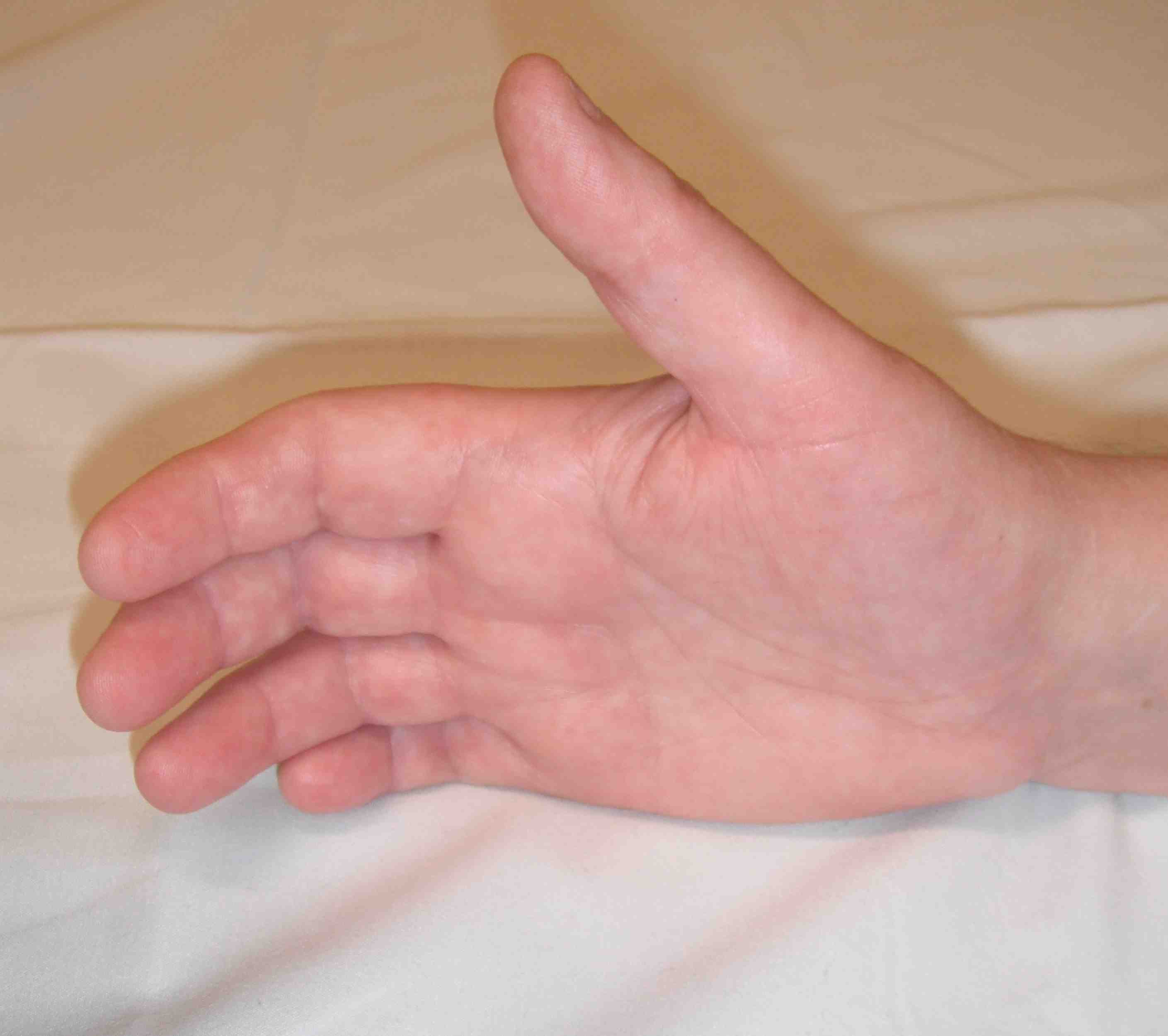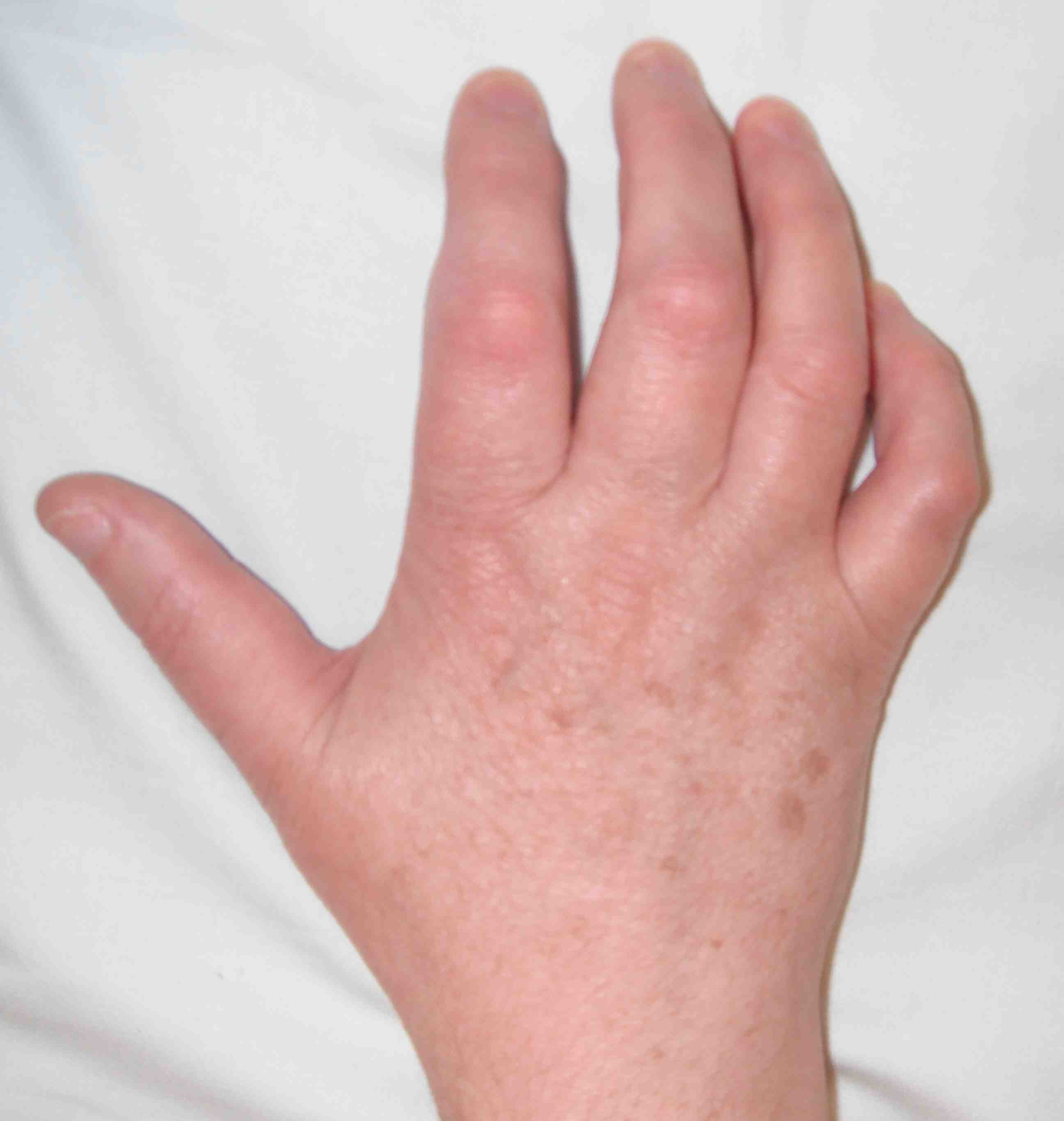Definition
Chronic Regional Pain Syndrome
CRPS 1
Sympathetically mediated pain syndrome
- excessive or exaggerated response of extremity to injury, surgery or disease
Manifested by
- intense or unduly prolonged pain
- vasomotor disturbances
- trophic changes
- delayed functional recovery
CRPS 2
Following injury to nerve plexus or peripheral nerve
CRPS
Definition
Autonomic dysfunction / trophic changes / impaired function
CRPS Type I: no nerve injury
CRPS Type 2: nerve injury
Risk factors
Women / smokers
External fixators
Tight casts
Lorente et al Arch Orthop Trauma 2023
- systematic review of CRPS after distal radius fractures
- incidence 14%
- risk factors high energy injuries / female / psychiatric disorders
Clinical


Burning pain / hypersensitivity / cold sensitivity
Change in colour / temperature / sweating of skin
Shiny skin
Reduced finger function
Intrinsic minus posture - hyperextended MCPJ / flexion IPJ
Vitamin C and CRPS Prevention
- RCT of 336 patients with distal radius fracture
- 500 mg vitamin C versus placebo
- no difference in outcomes
Evaniew et al J Orthop Trauma 2015
- meta-analysis of 3 RCTs and 890 patients
- no evidence that vitamin C reduces CRPS in distal radius fractures
Management
Physiotherapy / hand therapy
- active and passive ROM
- swelling control
- contrast baths - alternating hot and cold water
- desensitization
Clonidine patch
- 0.1 mg
- apply over sensitive area
Medications
| Amitryptiline | Lyrica | Gapapentin | Steroid pack |
|---|---|---|---|
| Tricyclic antidepressant | Pregabalin | Neurontin | |
|
25 mg three times daily 50mg at night |
75 - 100 mg 2 -3 times a day | 300 - 600mg tid | 25 - 50mg for 5 days |
| Drowsiness |
Dizziness Drowsiness Peripheral edema |
Dizziness Drowsiness Ataxia |
Adrenal suppression AVN |
| Contraindicated renal disease |
Historical Names
RSD (regional sympathetic dystrophy)
Sudeck's Atrophy 1900
- acute atrophy of bone associated CRPS
- associated with marked spotty osteoporosis
Aetiology
Usually preceded by trivial injury or surgery
Colles fracture
- most common
- 25 %
- associated with tight cast
Crush injury
Association with coronary artery disease
- like frozen shoulder
Shoulder-Hand Syndrome
- 10% cord or head injury
- i.e more common in stroke patients
- sustain injury to shoulder resulting in CRPS1 in ipsilateral hand
Pathology
Basis is excessive sympathetic efferent activity
- disturbance of centrally mediated autonomic regulation
Exact pathophysiology is unknown
- may involve all motor, sensory, sympathetic and parasympathetic fibres
- pathological changes are thought to occur in the spinal cord
- abnormal connections form between motor / sensory / autonomic pathways
Injury
- often trivial
- some personalities predisposed
- anxious & hypersensitive
Theories
1. Feedback Theory
- abnormal state of activity in interneurones
- continous stimulation of sympathetic & motor efferents
2. Gate Control Theory
- disorder of inhibitory fine tuning
- cells in dorsal horn that modulate afferent transmission
3. Peripheral Cross Stimulation Theory
- peripheral Nerve trauma leads to formation of synapse between sensory afferent & motor efferents
- allows for direct cross stimulation & cycle formation
Clinical Features
Upper limb more common than lower limb
Cardinal features
- burning pain out of proportion to injury
- swelling
- stiffness
- vasomotor discoloration
- autonomic = oedema, vascular, sudomotor
- sensory allodynia / pain from non noxious stimuli to skin


Stages
Stage 1: Acute 0-3/12
1. Continued localised pain
2. Sensory allodynia
3. Motor - decreased ROM
4. Autonomic - wet with excess sweating
5. Skin changes - Swollen & warm
Xray - normal
Bone scan - positive
Stage II: Dystrophic 3-6/12
1. Proximal spread of pain
2. Skin changes
- cool & dry
- mottled & dusky
- atrophic / shiny skin / decreased hair
3. Oedema of limb
Xray - early osteoporosis on XR
Stage III: Atrophic > 6/12
1. Intractable pain
2. Atrophy of skin, muscles & bone
3. Flexion contractures
4. Diffuse osteoporosis on Xray
Prognosis
Mean duration of symptoms 32 months
Prevention
Zollinger et al Lancet 1990
- RCT of vitamin C 500mg v placebo post wrist fracture
- significant reduction in prevalence of CRPS 1
Management
Best results with early diagnosis and action
Physical Therapy
1. Early active ROM / aggressive splinting
- avoid contractures
- passive and active ROM
2. Oedema control
- pressure dressings / garments
3. Desensitisation
- temperature / sensation
- cold water / hot water
- vibrations
Medications
NSAIDS
Amitriptyline
Gabapentin
van de Vusse e al BMC Neurol 2004
- RCT of gabapentin v placebo
- 2 three week treatments separated by 2 weeks
- some pain and sensory improvement
- not significant overall
Ketamine
Sigtermans et al Pain 2009
- RCT intravenous ketamine v placebo
- good pain relief
- minimal functional improvement
Sympathetic Interruption
Regional Sympathetic Blockade
- diagnoses and treatment
- almost always effective
- if not effective consider another cause
- effect usually temporary
- multiple procedures usually required
- if > 4 required, consider surgical sympathectomy
Options
- stellate ganglion blocks
- IV blocks / guanethidine / reserpine
- surgical sympathectomy
Stellate Ganglion Block
Technique
- 0.25% Marcaine
- can use Botox to lengthen the treatment effect
- anterior paratracheal approach
- at C6 level ~ cricoid cartilage
Results
Ackerman et al South Med J 2006
- stellate ganglion blocks with LA
- 40% success if symptoms < 6 weeks
- 36% success if duration 12 weeks
- 25% in group with symptoms averaging 35 weeks
Intravenous block / Bier's Block
Options
Guanethedine
- false transmitter
- taken up by sympathetic nerve endings
- displaces Noradrenaline
Reserpine
- depletes sympathetic nerve ending stores of Noradrenaline
- decreases storage vesicle reuptake
Results
Paraskevis et al Clin Rheumatol 2006
- bier blocks of guanethedine and lidocaine
- multiple treatments required
- complete pain relief and return to function in all 17 patients
Surgical Sympathectomy
Indication
- good but temporary relief from 4 blocks
Amputation
Contra-indicated
- poor results with stump RSD
